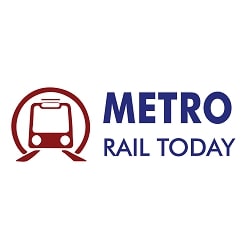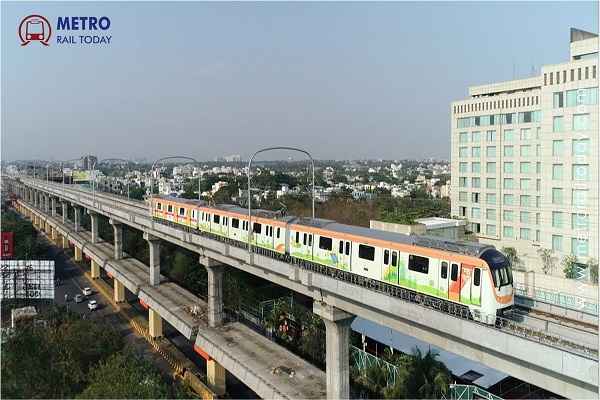 EIB approves €289.5 million loan for expansion of Nagpur and Pune Metro Rail Projects
EIB approves €289.5 million loan for expansion of Nagpur and Pune Metro Rail Projects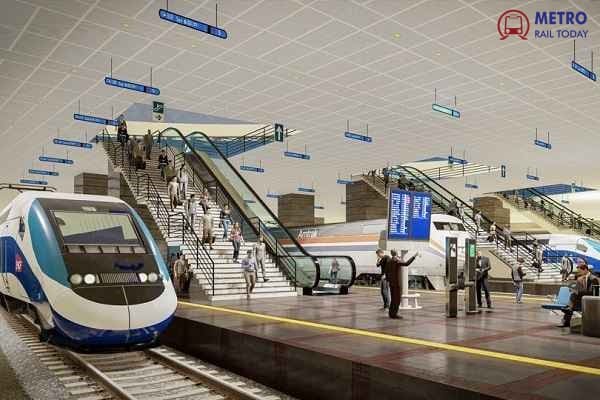 India is building Largest Railway Station in Amaravati - Know all about
India is building Largest Railway Station in Amaravati - Know all about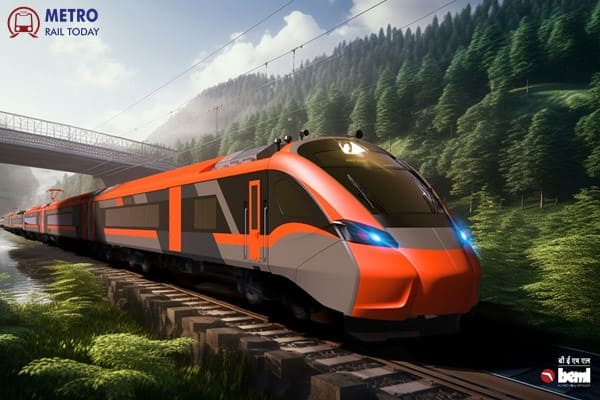 Kineco and BEML forge strategic partnership to strengthen indigenous composite manufacturing
Kineco and BEML forge strategic partnership to strengthen indigenous composite manufacturing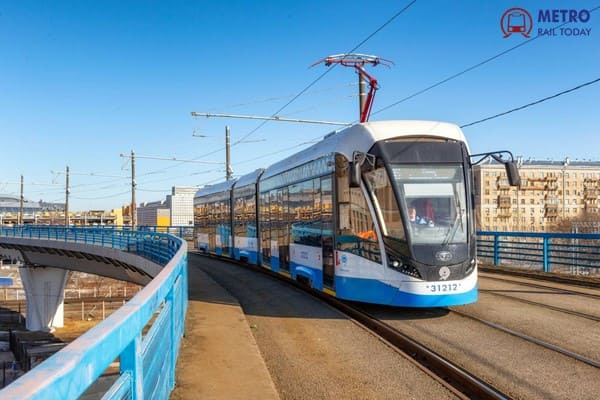 UN blacklists Spanish Trainmaker CAF over activities in Occupied Palestinian Territories
UN blacklists Spanish Trainmaker CAF over activities in Occupied Palestinian Territories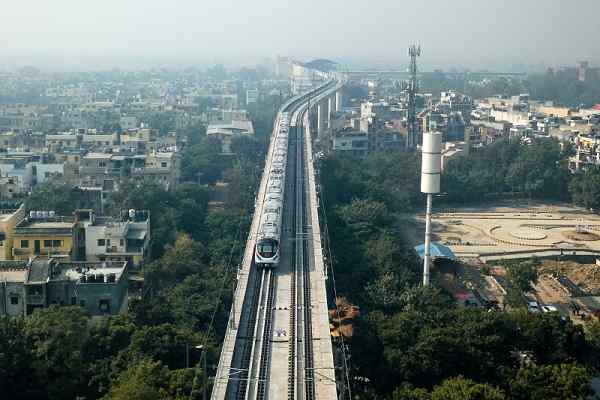 Prayagraj to get full-fledged Metro System, replacing the Metrolite Plan
Prayagraj to get full-fledged Metro System, replacing the Metrolite Plan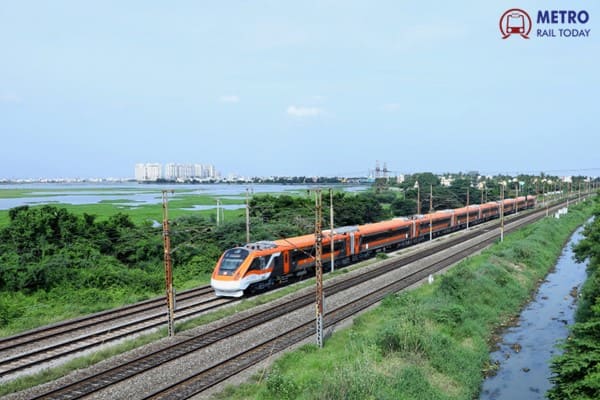 Sensonic & Skylark Drones Join Hands to Revolutionize Rail Infrastructure Monitoring
Sensonic & Skylark Drones Join Hands to Revolutionize Rail Infrastructure Monitoring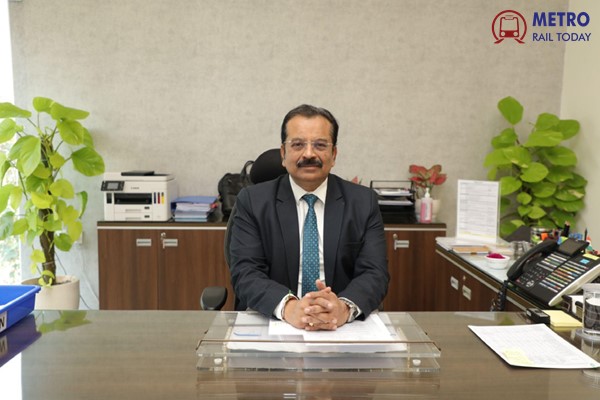 Namo Bharat: Driving India’s Transit Revolution with Sustainability and Seamless Connectivity
Namo Bharat: Driving India’s Transit Revolution with Sustainability and Seamless Connectivity RVNL - The Silent Engine Driving India’s Rail Infrastructure Boom
RVNL - The Silent Engine Driving India’s Rail Infrastructure Boom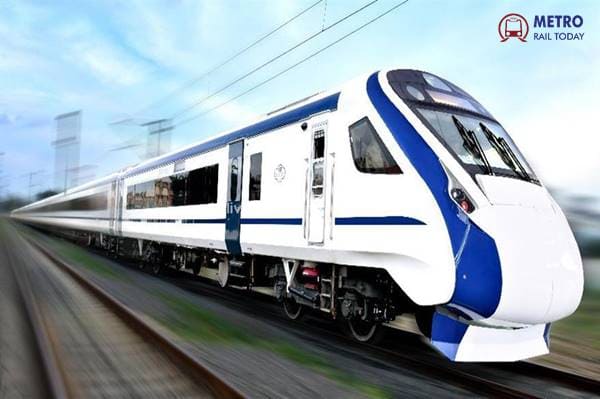 India to introduce 800 Vande Bharat Trains to redefine the future of Indian Railways by 2030
India to introduce 800 Vande Bharat Trains to redefine the future of Indian Railways by 2030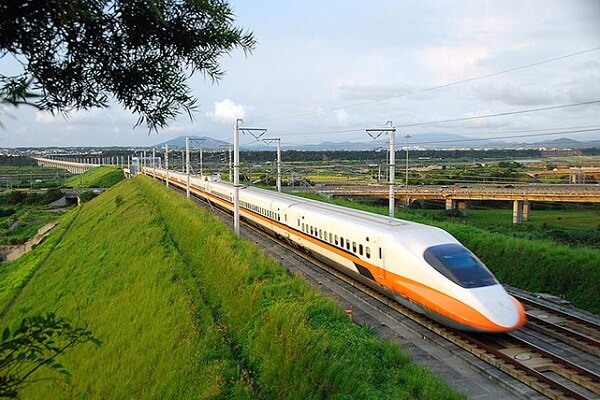 Indian Railways to develop 7,000 km of dedicated Passenger Corridors by 2047
Indian Railways to develop 7,000 km of dedicated Passenger Corridors by 2047
Bangalore Metro would stretch over 500 km network, largest in India in a few years

In a free-wheeling chat with TNIE, Bangalore Metro Rail Corporation Limited (BMRCL) Managing Director Anjum Parwez threw light on the A to Z of Bangalore Metro from its origins to its near and far future. Optimistic that Bengaluru Metro would stretch up to 500 km in a few years and emerge as India’s longest metro network, he addressed the perennial issue of first- and last-mile connectivity to metro stations, the challenges of construction in traffic-choked areas and the massive game changer that metro is evolving into. Excerpts:
What is the status of the different lines of BMRCL’s Phase-II network?
We will complete Phase-II by 2024. We were supposed to complete the entire stretch of Phase-II by 2021-22, but because of Covid we lost two years and land acquisition issues took much time. With all issues sorted out, we are on track now. With the recent inauguration of the Whitefield-Kadugodi-KR Puram line, we have an operational network of 69.9 km and are No. 2 in the country, marginally more than Hyderabad. Another 70 km of work is in progress and we are roughly targeting completion of 30 km by December 2023. In a city like Bengaluru, where we have already crossed 10 million population, metro is never-ending. In the beginning, it was short from Baiyappanahalli to MG Road and people took rides for fun. We went through a gradual increase in operational route length and patronage. Pre-Covid, we touched around 5.7 lakh riders and after Covid, ridership went down drastically. Post-Covid, too, it took people some time to gain confidence in metro.
Last two days (May 23 and 24), we have crossed 6 lakh ridership and reached pre-Covid levels. In July, we are planning to start the KR Puram-Baiyappanahalli 2 km link. With that, we will touch 7 lakh ridership. Along with that, we will connect Kengeri with Challaghatta. The whole stretch from Whitefield (Adugodi) to Challaghatta will be operational and the East-West Corridor will be complete. In the North Corridor, going up to BIEC may take a little time as we have to cross the NICE Road to put the girder. After that the big one will be in December 2023 when we will be operationalising our Bommasandra-RV Road line. The next one will hopefully be in December 2024 from Central Silk Board to KR Puram and then KR Puram to Airport will be in 2025. That will be the last stretch of Phase-II.
What does the future hold?
Phase-3 for 45 km will have two corridors. It will run from JP Nagar IV Phase to Kempapura which will merge with the Airport Line from the other side of the Ring Road. One stretch of 12 km will come from Hosahalli to Magadi Road. Last year, the then CM announced a new line, Phase 3A, Sarjapur to Hebbal via Iblur Junction, Agara and Koramangala which will merge with the Airport Line. Hebbal is going to emerge as the mega centre and will have three stations here, two elevated and one underground, which will all be integrated. Metro is a capital-intensive project.
As per present costs, it will take about Rs 600 crore per km, including signalling and rolling stock. But if you are building underground then it touches about Rs 750 crore per km. It is time-consuming too. For any metro project, the minimum gestation period is about four years. If we are able to launch Phase-2A by December 2024, it will be in record time for a stretch of 14 km. We have our Comprehensive Mobility Plan and our target is 317 km of metro network by 2031. I will not be surprised if the pace at which Bengaluru is going, we might go up to 500 km and become the longest metro network in the country.
What are the plans for metro ticketing in future?
Gradually, travel tokens will disappear and all commuters have to move to QR ticketing. Even the Smart Card will have to go, but now is not the time. Everyone will have to switch to using a Common Mobility Card. We are planning Automatic Ticketing Machines and that will generate paper tickets. In a month, we will have the facility of multiple QR codes with a single transaction so that an entire family (maximum of ten) can use one QR ticket.
Metro is changing the way people commute in Bengaluru.
I always say that the metro is a way of life. You have to develop a habit of walking 500 metres to 1 km. Ultimately, when the entire network is completed, within a 1 km area there will definitely be a metro station. Metro is a game-changer and a safe mode.
Are you in talks with any of the other organisations to improve last-mile connectivity?
The first- and last-mile connectivity and multimodal integration are two priority issues. Along with multi-modal integration, BMTC has to provide the feeder service but it is not economically viable for them. We are talking with Bangalore Metropolitan Transport Corporation (BMTC) and Department of Urban Land Transport (DULT) to develop a model where loss incurred by BMTC for the service can be sustained by the government. A seamless transportation boosts the economy and results in time saving. BMTC has already bought some 9-metre buses. We have asked them to buy some 6-metre ones to make it easy to manoeuvre near stations. Two-wheelers will play an extremely important role as bike taxis.
Simultaneously, we have to focus on improving footpaths especially within 500 metres of metro stations. We are working with DULT to make pedestrians feel more confident to walk with more CCTV cameras and streetlights. Improving first- and last-mile connectivity will increase our ridership by at least 30-40% as most commuters face problems reaching stations.
Any plans to extend metro timings so those working on night shifts can avail services?
The issue is economics. We get resources for capital investment from the state and Centre. But when it comes to operation and maintenance, metro has to generate its own resources. Unless trains have a very good frequency it does not help. Nobody would like to wait 30 minutes at night to catch a train. There are safety issues too. Running double shifts will require more employees which is not financially viable.
What about running metro trains earlier than 7 am on Sundays? Many rail passengers who reach KSR station early wait for hours to board a metro train.
Without enough footfalls every hour of metro train operations, it will hit our revenue. People alight at KSR but have to go to different areas, then I have to run a 5 am train in all four directions. At some point of time, if BMRCL is cash-rich, it could be considered. In the long run, that will be taken care of.
How are you making people take the metro?
Our prime focus is on people using two- and three-wheelers. We conduct awareness campaigns that two-wheelers are not a safe mode of transport as maximum road deaths happen among riders. Covid played a major role in boosting the use of private vehicles and many purchased vehicles during the pandemic. We are now in talks with IT parks and residential complexes to use metro trains. For instance, in Whitefield, we are considering metro feeder buses covering IT parks and apartments with minimum 100 flats. Buses will stop right at their gates. We are trying to run AC buses.
We are also in talks with companies to do away with cab services and give metro train passes to employees -- like a smart card with a limit, say of Rs 3,000. Connectivity will be provided right inside campuses, like recently ITPL has taken. It will be done by GE Electric, too. Bosch, too, is in touch to get metro connectivity directly to their campus. Embassy is following suit. Bagmane will be connecting with us at four locations, and Manyata is coming forward now. Infosys is taking metro connectivity from Electronic City-I directly into their campus via a 700-metre FOB.
With metro usage, traffic will definitely come down on roads. Whitefield is not as crowded as it used to be because 28,000 people use trains every day on this newly opened route. When the KR Puram-Baiyappanahalli stretch is connected, about one lakh people will use it and roads in Whitefield will be empty. We are working on Transit Oriented Development, which is to densify the metro corridor and allow mixed development like residential and commercial properties so metro connects everything. We are also promoting shops inside metro stations so you can buy groceries and food. We called tenders for retail outlets four months ago, but did not get any response as BMRCL’s rent expectation was quite high. I have reduced it by 50%. We are offering 1,50,000 sq ft of commercial space.
One of the best agencies to support you will be the traffic police as they will be glad to have traffic off the roads. Are they supportive?
We have a very close relationship with the traffic police. Recently, BMRCL launched prepaid autos at five stations with their assistance. During the construction, traffic cops are our backbone. The challenge in Bengaluru is that we are constructing metro where the traffic is full. Outer Ring Road is a nightmare for us. Traffic personnel come up with very good ideas. For instance, the waiting time at KR Puram junction has come down from almost 12 minutes to 3 minutes as a result of a brainstorming session by BMRCL with traffic and BBMP.
How do you view Tier-2 cities? Hubballi-Dharwad and Mysuru and other cities are growing fast. Shouldn’t metros be started there?
No. Not at all. Unless you reach a threshold population of 20 lakh, you should not contemplate metro operations. Otherwise it will bleed as the running cost is very high. In a small city like Mysuru or even in Hubballi-Dharwad, it will not be successful. The focus should instead be to take mass rapid transport to areas like Hoskote, Devanahalli or Bidadi through metro or suburban networks.
Any plans to integrate metro network with the upcoming suburban rail?
With the present plan of K-RIDE, two networks intersect suburban rail at nine places. We will have a FOB at all those points. We are also trying to connect metro with railway stations at KR Puram, Yeshwantpur and Whitefield. We are connecting metro with major KSRTC and BMTC stations.
What is the role of solar energy in powering metro?
We are trying to be independent of Bescom. We first started with only 1 megawatt solar plant. Now, the work is on for 20 megawatts. We are covering the rooftops of all Phase-I metro stations. Future metro stations will have solar panels on top. That will take care of at least 30-35% of our energy requirements. We are working on an initiative called `Brake Energy’. Whenever you apply brakes on the train, the friction will generate energy which will be tapped and sent back to the feeder. Our electricity bill will come down by 20% through this regenerative energy.




